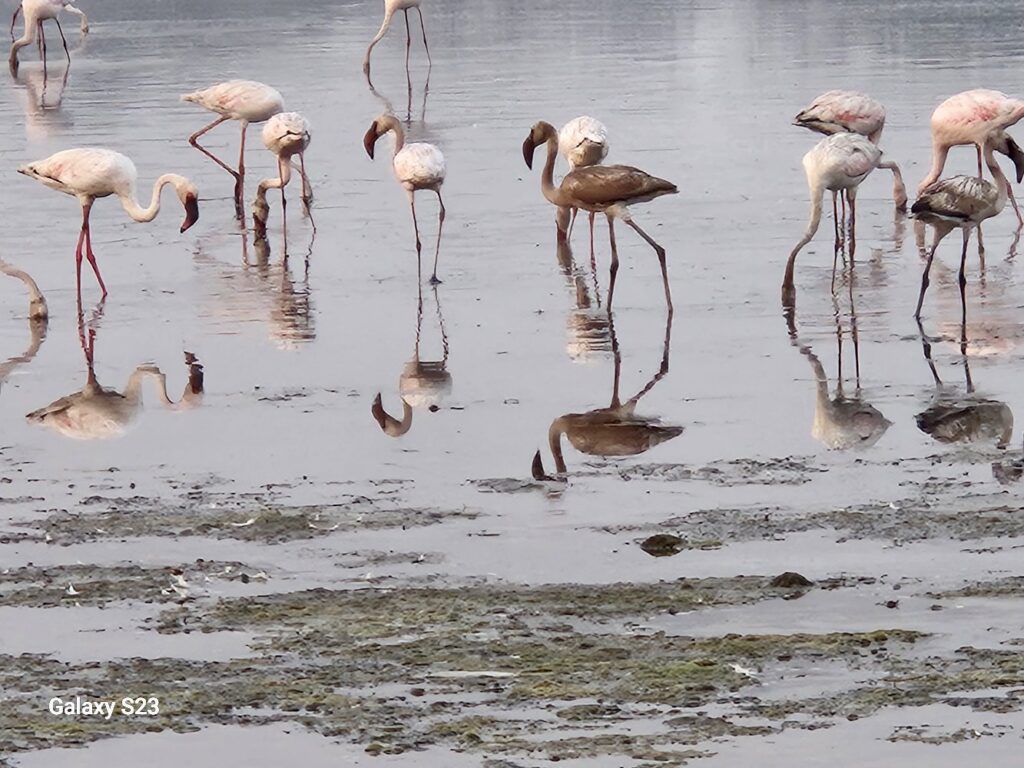Amidst the man-made concrete jungles of Mumbai city and its massive population, the pink feathered visitors at TS Chanakya Birding Point, Navi Mumbai, add to its beauty. When visiting the tinsel town from far-off places like Iran, Afghanistan, Pakistan, and Israel, the birds also have local migration patterns from Gujrat. Shallow waters, safe nesting grounds, and enough food have made some winged visitors make this Navi Mumbai point their permanent home.
Shmes Sufiyan Ansari, who is studying for a master’s in biodiversity, wildlife conservation, and management, has observed these birds for the past few years. Sharing his observations with The Voices, Ansari says that mangrove belts along the western coast are like a haven for these birds, offering the conditions they need to thrive. With over 200 species spotted in a week, Navi Mumbai is part of this large stretch of coast that provides shallow waters and mudflats where the birds can easily feed. It’s a peaceful place where they can stand without the constant push of the waves.
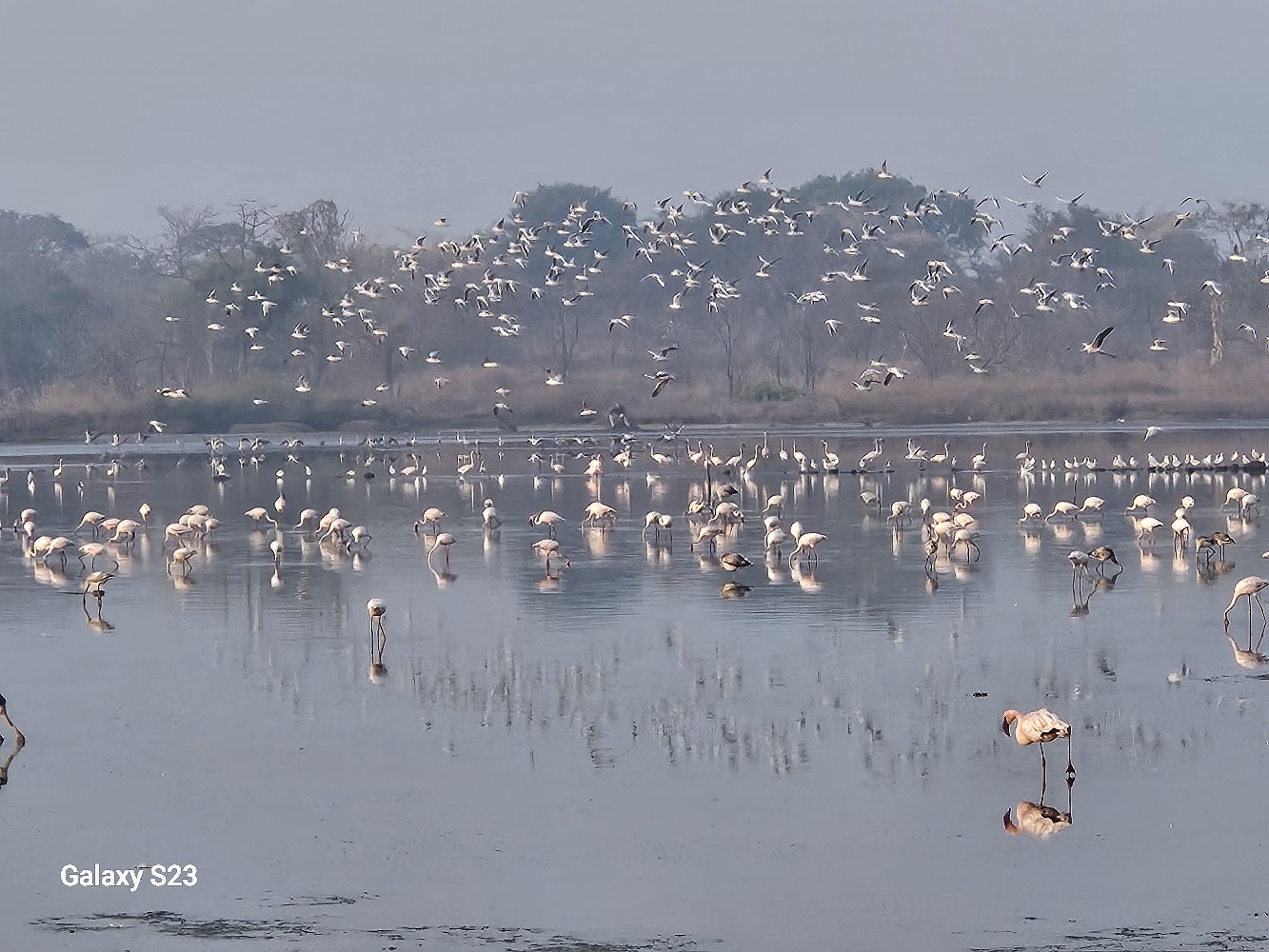
Navi Mumbai Wetlands: Vital environment for all
The Navi Mumbai wetland is an ecologically rich and diverse ecosystem that is a crucial spot for migratory bird species, particularly the flamingos. The place provides a conducive environment with plenty of food and nest safety. The presence of rich vegetation like algae, small crustaceans and molluscs – typically found in shallow water – is a staple food for flamingos. It’s this diet that turns these birds into pink-coloured creatures. Two kinds of flamingos visit Navi Mumbai, categorized based on size, including greater flamingos and lesser flamingos. The annual migration remains mysterious owing to the incredible distance the birds cover to reach this human habitation.
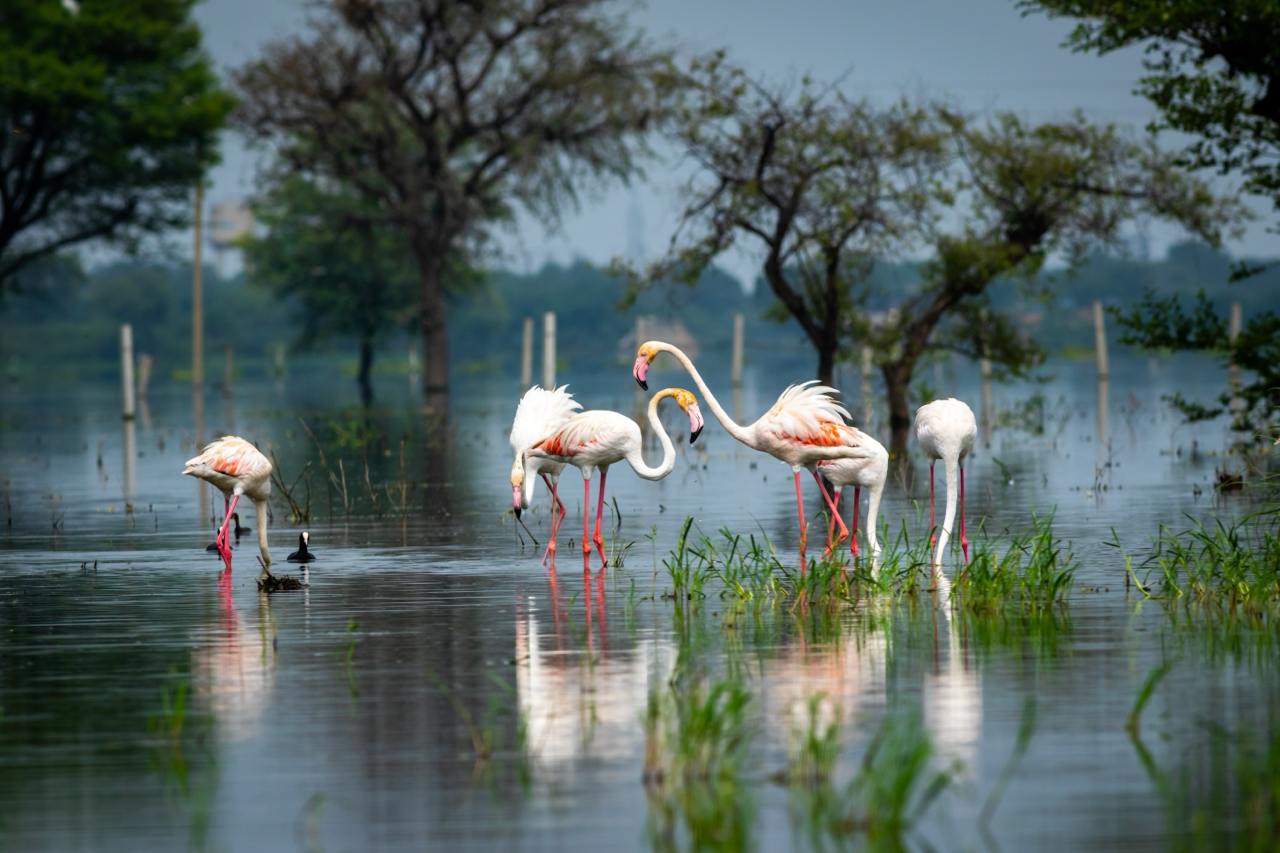
The Importance of Wetlands and Biodiversity
The Navi Mumbai wetlands are about more than just flamingos’ habitat. They are a center of rich and thriving biodiversity. The Navi Mumbai area is home to migratory bird populations as well as a great variety of plant and animal life. With such a rich ecosystem, the place has a crucial function in stabilizing nature, filtering water, controlling floods, and housing a vast number of species.
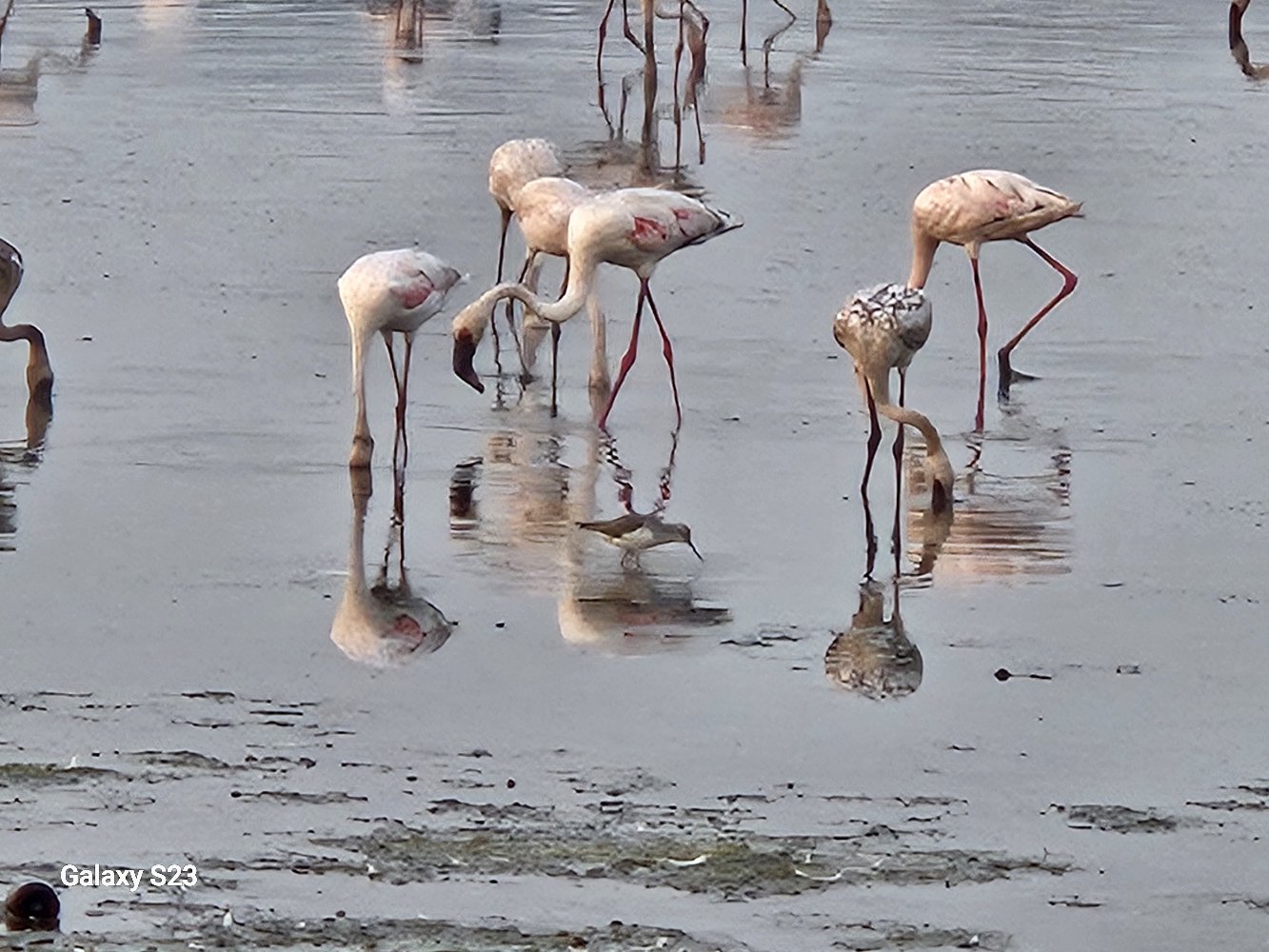
Urbanization and Its Challenges
Ecologist Ansari adds that the ever-growing urbanization has added its own challenges to the fragile ecosystem of wetlands. Urbanization in Navi Mumbai, resulting in pollution, habitat degeneration, and encroachment of protected areas, poses a huge risk to the pink population.
Since most of these factors are highly destructive, environmental groups and the government are working to protect the wetlands. Some important initiatives include promoting green infrastructure, focusing on conservation laws, and raising public awareness about the importance of these natural areas. Ansari observes that these actions create a delicate balance between urban development and the environment.
Ansari observes that urbanization can’t be ignored as it ushers in the country’s progress. At the same time, the government should ensure that places like wetlands are developed as tourist destinations to turn them into commercial centres, as has been seen in eco-tourism related to tiger conservation.

Best Time to Spot the Flamingos
Bird watchers flock to places in Navi Mumbai between December and May, when flamingos are in their natural habitat and can be seen in large numbers. Popular flamingo sighting spots in Navi Mumbai include Sewri Mangrove Park, Thane Creek Flamingo Sanctuary – a Ramsar site, TS Chanakya, Tawale Wetlands and Nerul. These locations provide the ideal environment to observe the beauty of flamingos in their natural habitat. Ansari says that these places can be dotted together as an eco-tourism package to drive the economy and encourage more migratory birds.

Rise for Protection of Our Wetlands
Ansari bats for conservation efforts through sustainable development. Emphasizing general public awareness to protect natural habitats, Ansari says that Just like tigers, flamingos and other wildlife bring in tourism, which benefits us all. “But losing even one bird can have a huge impact on the whole population. That’s why protecting places like these is so important. There are strong rules in place here—cutting down mangroves is treated with the same seriousness as taking a life. He reasons that what we do now will shape our world and our future,” he reasons.
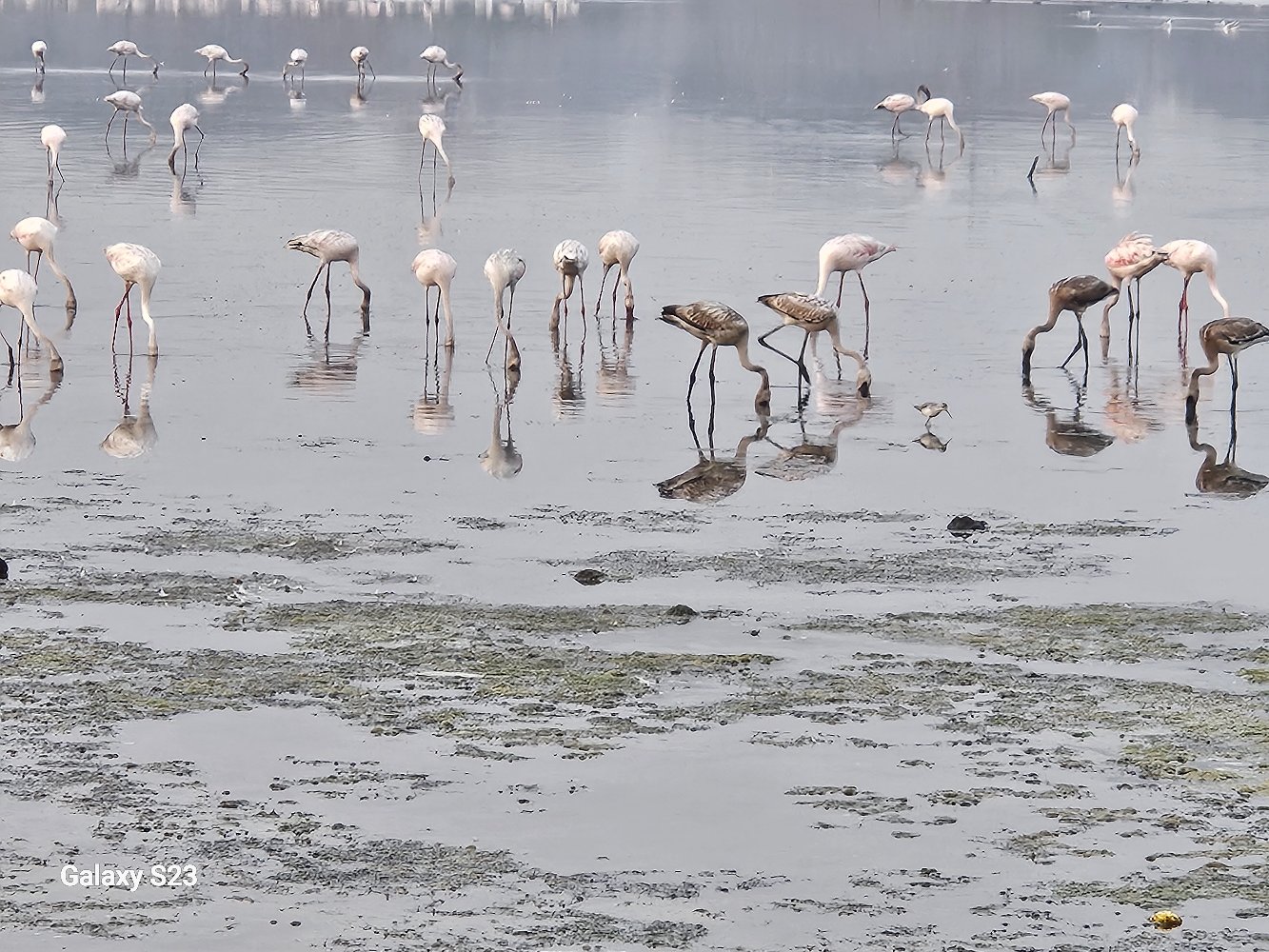
Key Takeaway:
- Flamingos migrate annually to Navi Mumbai from Gujarat and other countries like Iran, Afghanistan, and Pakistan for breeding and food.
- Greater and lesser flamingos are the two flamingo species in the Navi Mumbai wetlands.
- Navi Mumbai Wetlands are crucial for maintaining biodiversity and providing a safe environment for migratory birds.
- Urbanization threatens wetlands, but efforts such as green infrastructure, conservation policies, and public awareness are helping to protect these vital ecosystems.
- The best time to spot flamingos in India is between December and May, and several hotspots in Navi Mumbai, such as Sewri Mangrove Park, Thane Creek Flamingo Sanctuary, and TS Chanakya Birding Point, are open to visitors.
Learn more about flamingos with ecologist Mr. Shmes Sufyan Ansari, who helps us understand the uniqueness of flamingo migration and how it adds value to the environment and the city.

